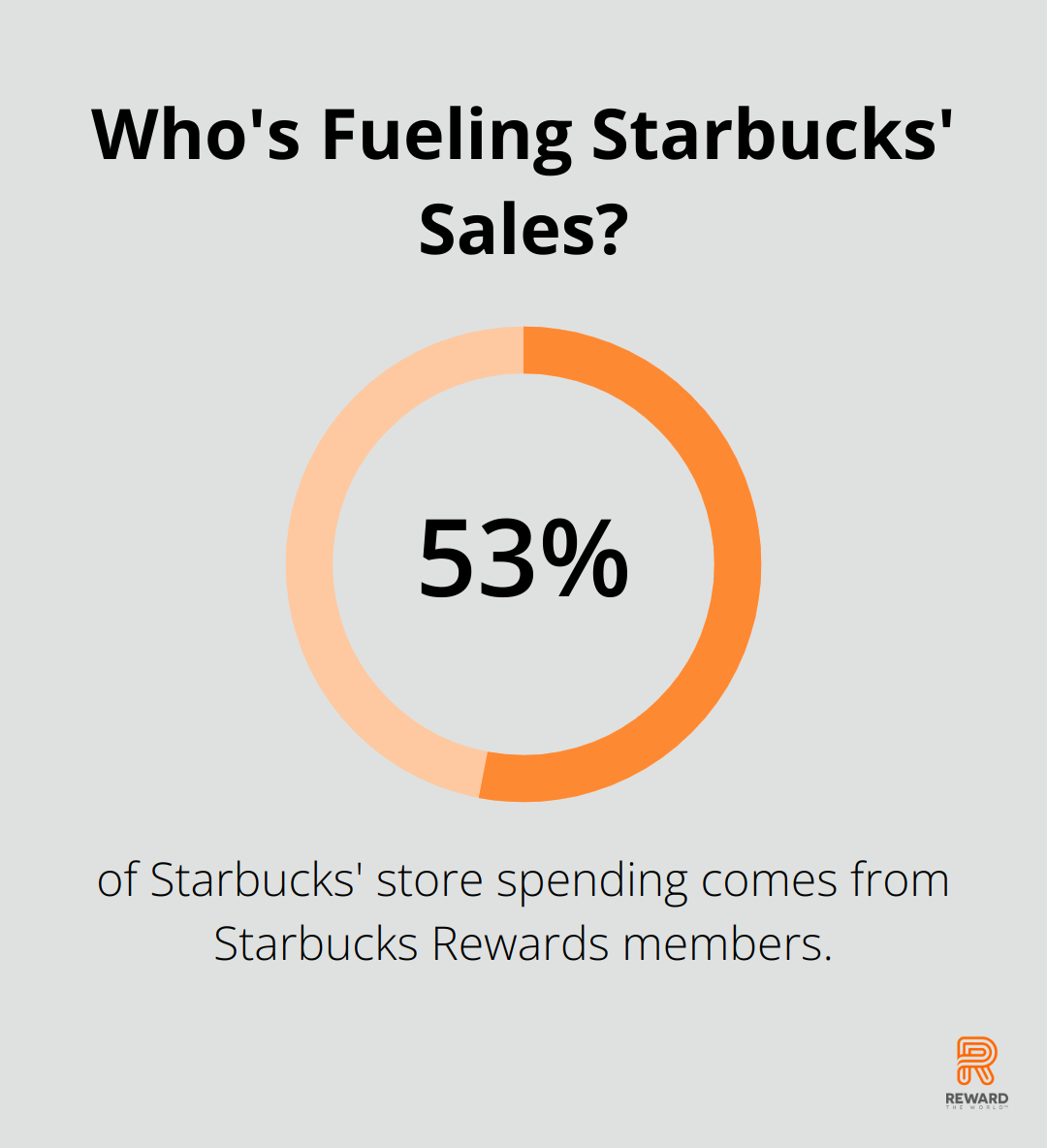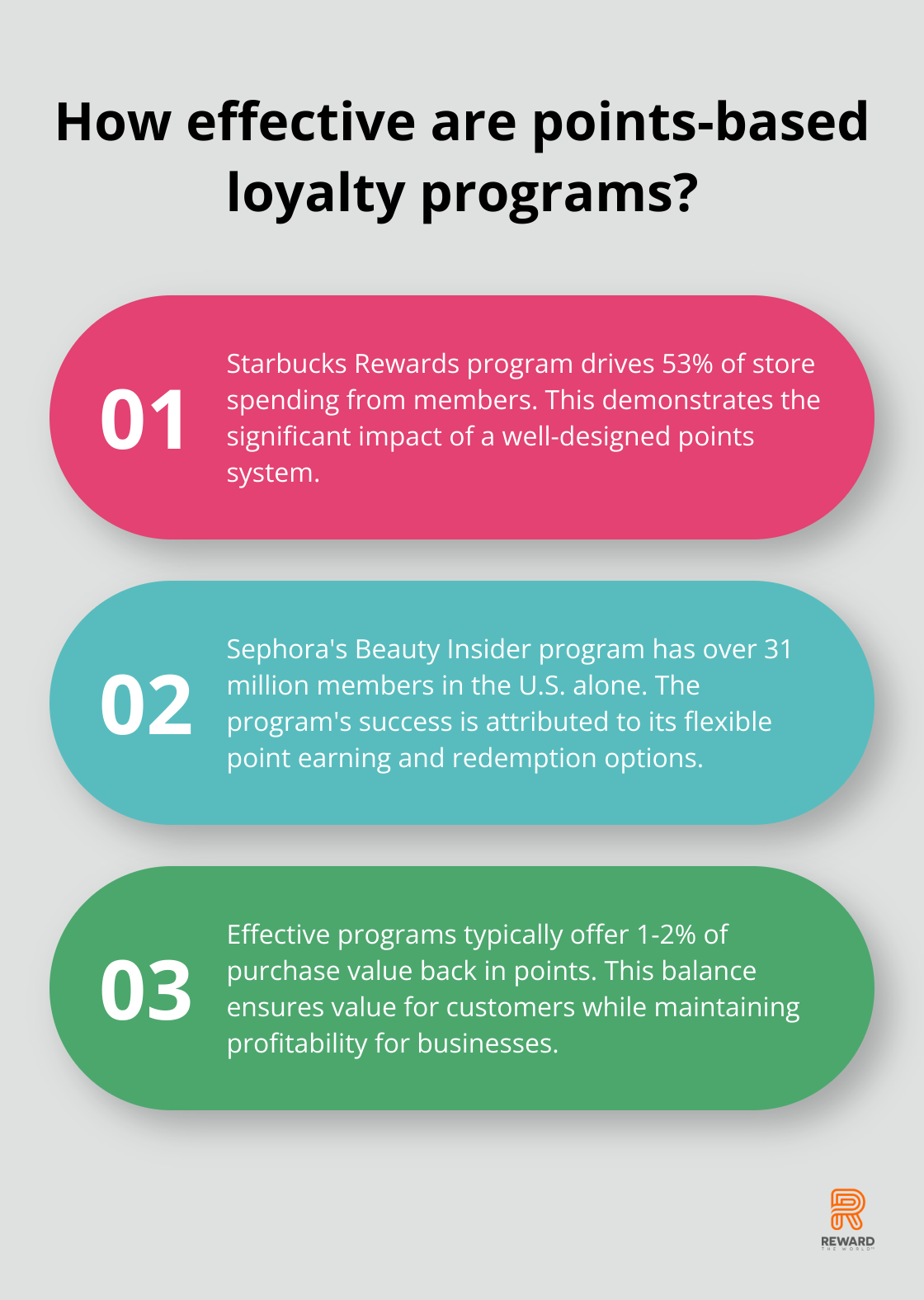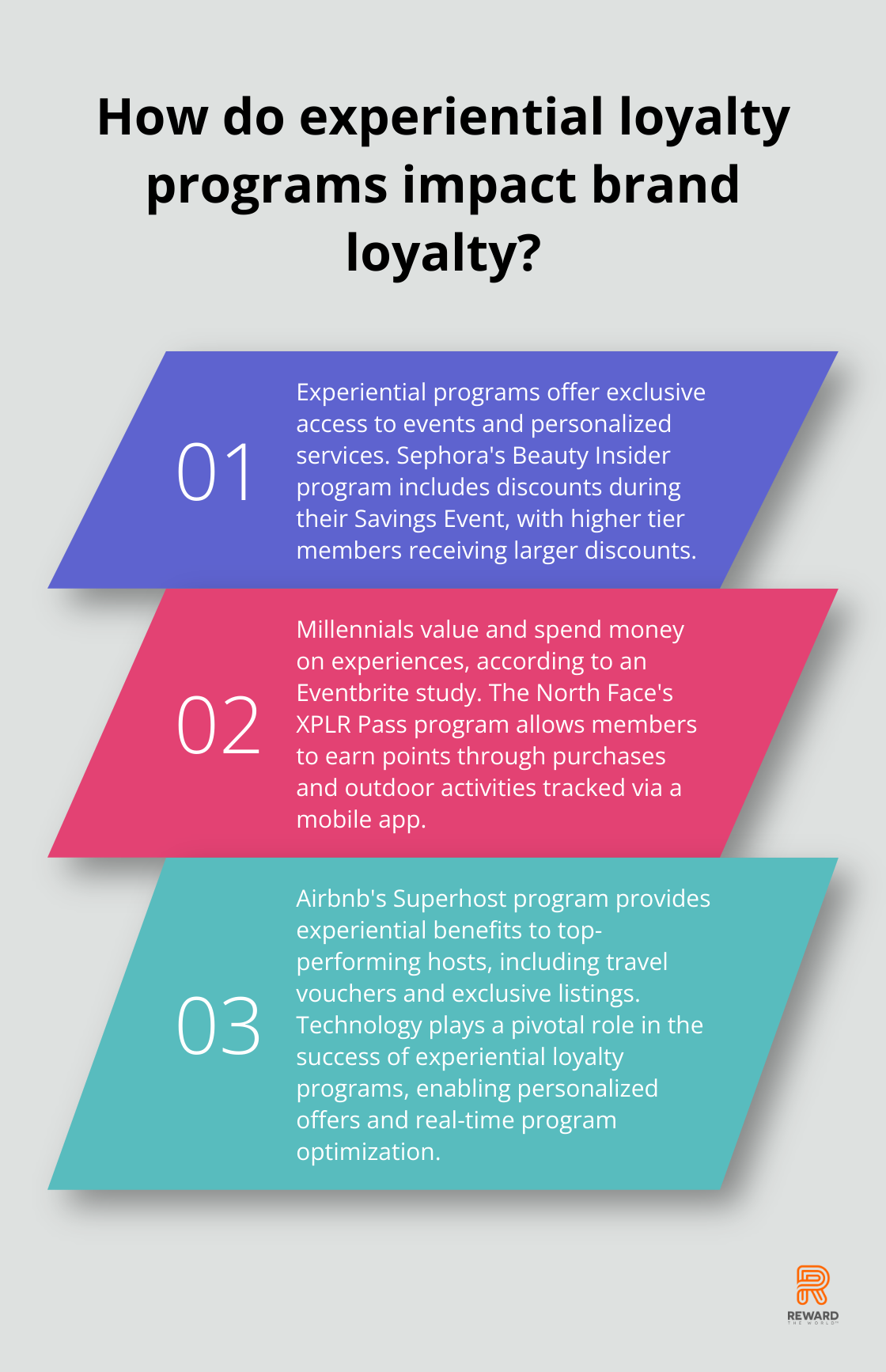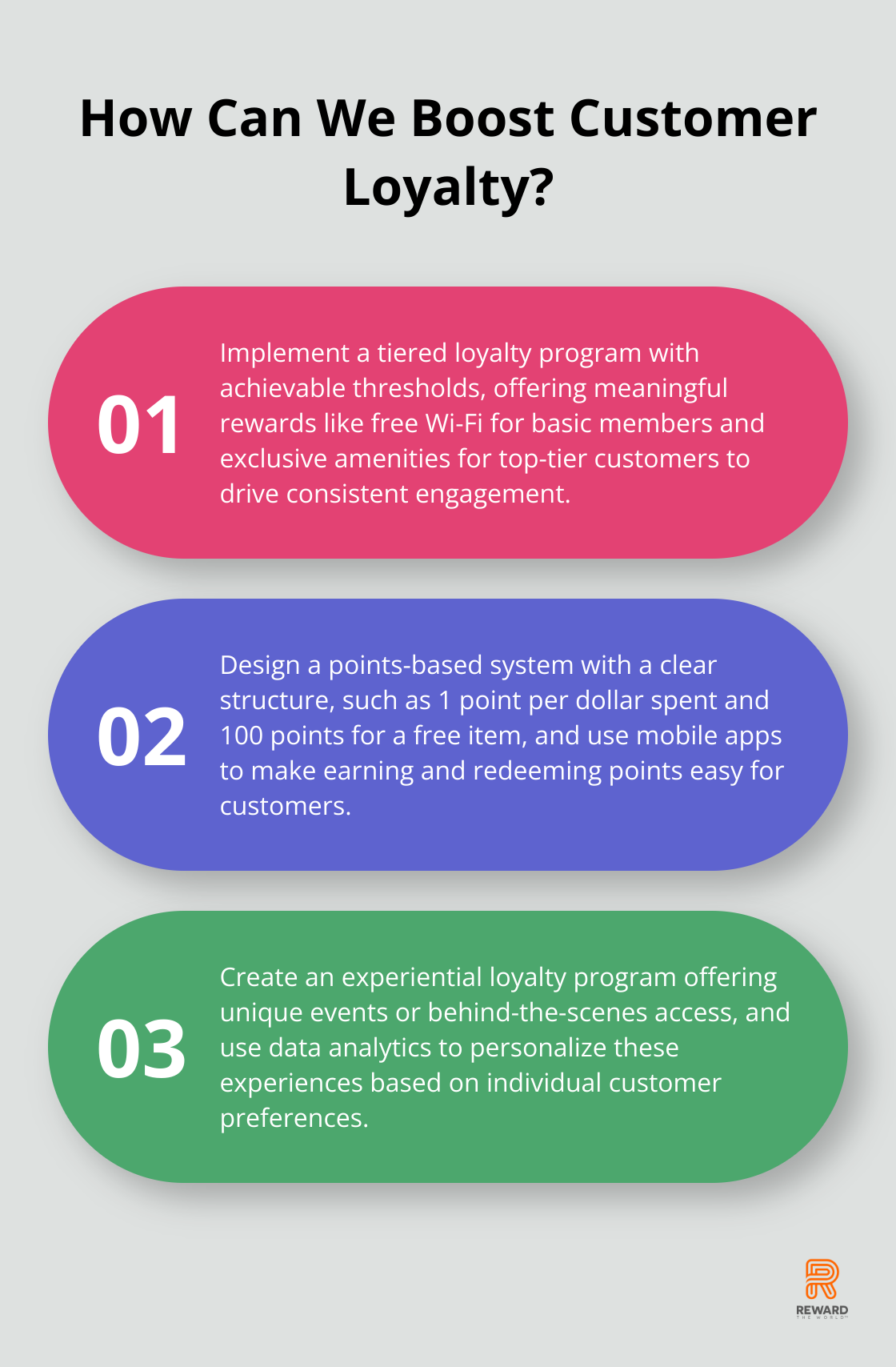
Customer loyalty programs are powerful tools for businesses to boost retention and drive sales. At Reward the World, we’ve seen firsthand how effective these strategies can be when implemented correctly.
In this post, we’ll explore three customer loyalty programs that consistently deliver results. We’ll break down their mechanics, benefits, and provide real-world examples to help you choose the right approach for your business.
How Tiered Loyalty Programs Boost Customer Retention
The Mechanics of Tiered Programs
Tiered loyalty programs offer a powerful strategy to encourage repeat business and foster long-term customer relationships. These programs provide escalating benefits as customers increase their engagement with a brand.

Tiered programs typically start with a basic level open to all customers. As members make more purchases or engage more frequently, they unlock higher tiers with increasingly valuable perks. This structure creates a clear incentive for customers to concentrate their spending with a single brand.
For example, a hotel chain might offer free Wi-Fi to all members, room upgrades for mid-tier customers, and exclusive access to luxury amenities for top-tier guests. This graduated approach keeps customers motivated to reach the next level, driving consistent engagement.
Proven Success Stories
Several major brands have seen significant results from tiered loyalty programs. Sephora’s Beauty Insider program stands out as a prime example, with over 31 million members in the U.S. alone. The program first launched in 2007 and offers three tiers – Insider, VIB, and Rouge – with increasingly exclusive perks.
Another success story is Starbucks Rewards, which boasts nearly 30 million members. Company reports indicate these members account for 53% of the company’s store spending. The program’s tiered structure, offering benefits like free refills and personalized offers, has become a key driver of its success.
Implementing an Effective Tiered Program
When you design a tiered loyalty program, it’s important to strike the right balance. Here are some practical tips:
- Set achievable tier thresholds: Ensure customers can realistically progress through the tiers. Overly high barriers can discourage participation.
- Offer meaningful rewards: Each tier should provide tangible benefits that resonate with your customer base. Conduct surveys or analyze purchase data to identify what your customers value most.
- Create exclusivity: Reserve some high-value perks for top tiers to motivate continued engagement. This could include early access to sales, exclusive events, or personalized services.
- Communicate clearly: Ensure customers understand how to progress through tiers and what benefits they’ll unlock. Regular updates on their status can encourage further engagement.
- Use technology wisely: Leverage data analytics to personalize offers and track customer behavior. This can help you refine your program over time for maximum effectiveness.
The Role of Technology in Tiered Programs
Modern technology plays a pivotal role in the success of tiered loyalty programs. Advanced analytics tools allow businesses to track customer behavior, personalize offers, and optimize tier structures in real-time. Mobile apps make it easy for customers to check their status, redeem rewards, and engage with the brand (often leading to increased program participation).
Platforms like Reward the World offer robust analytics and customization options, making it simple to implement and optimize tiered loyalty programs tailored to specific business needs. These technological solutions can significantly enhance the effectiveness of your tiered program, leading to improved customer retention and increased lifetime value.
As we move forward, let’s explore another popular loyalty program structure: points-based systems. These programs offer a different approach to rewarding customer loyalty, with their own unique benefits and challenges.
How Points-Based Programs Boost Customer Loyalty
The Mechanics of Points-Based Systems
Points-based loyalty programs form a cornerstone of customer retention strategies for many successful businesses. These programs offer a straightforward way to reward customers for their purchases and engagement, creating a powerful incentive for repeat business.

In a points-based program, customers earn points for various actions (primarily purchases). These points can then be redeemed for rewards such as discounts, free products, or exclusive experiences. The key is to make the earning and redemption process simple and transparent.
For example, a coffee shop might offer 1 point for every dollar spent, with 100 points earning a free drink. This clear structure helps customers understand the value of their loyalty and motivates them to increase their spending to reach reward thresholds.
Success Stories That Inspire
Several major brands have seen significant results from their points-based programs. The Starbucks Rewards program stands out as a prime example, with 53% of the company’s store spending coming from members. The program’s success lies in its simplicity and the variety of ways members can earn and redeem points.
Another success story is Sephora’s Beauty Insider program, which boasts over 31 million members in the U.S. alone. The program allows customers to earn points on purchases and redeem them for a wide range of beauty products, creating a strong incentive for repeat purchases.
Best Practices for Designing an Effective Points Program
When you implement a points-based loyalty program, consider these best practices:
- Set the right earn rate: Balance the points earned with the cost to your business. A common approach is to offer 1-2% of the purchase value back in points.
- Offer a variety of redemption options: Give customers choices in how they use their points. This could include discounts, free products, or exclusive experiences.
- Make earning and redeeming easy: Use technology to automate point tracking and redemption. Mobile apps can significantly enhance the user experience.
- Personalize offers: Use data analytics to tailor rewards to individual customer preferences. This increases the perceived value of the program.
- Communicate regularly: Keep members engaged with updates on their point balances and available rewards. This can drive more frequent purchases.
Leveraging Technology for Program Success
Modern technology plays a pivotal role in the success of points-based loyalty programs. Advanced analytics tools allow businesses to track customer behavior, personalize offers, and optimize program structures in real-time. Mobile apps make it easy for customers to check their point balances, redeem rewards, and engage with the brand (often leading to increased program participation).
Platforms like Reward the World offer robust analytics and customization options, making it simple to implement and optimize points-based loyalty programs tailored to specific business needs. These technological solutions can significantly enhance the effectiveness of your points program, leading to improved customer retention and increased lifetime value.
As we explore different loyalty program structures, it’s important to consider how emotional connections can further enhance customer loyalty. In the next section, we’ll examine experiential loyalty programs and their unique approach to fostering brand advocacy.
How Experiential Loyalty Programs Boost Brand Loyalty
The Power of Unique Experiences
Experiential loyalty programs elevate customer engagement to new heights. These programs focus on creating memorable experiences that forge strong emotional connections between customers and brands, unlike traditional points-based or tiered systems.

Experiential programs offer exclusive access to events, personalized services, or behind-the-scenes glimpses that money can’t buy. Sephora’s Beauty Insider program, for instance, includes discounts during their Savings Event, with higher tier members receiving larger discounts. These unique experiences create a sense of belonging and exclusivity that keeps customers returning.
A study by Eventbrite reveals that millennials value and spend money on experiences. This trend highlights the potential impact of experiential loyalty programs on younger demographics.
Real-World Success Stories
Several brands have achieved remarkable results with experiential loyalty initiatives. The North Face’s XPLR Pass program stands out as a prime example. Members earn points through purchases and outdoor activities tracked via a mobile app. They can redeem these points for unique adventures like mountain climbing expeditions or photography workshops with National Geographic photographers.
Airbnb’s Superhost program offers another success story. While not a traditional loyalty program, it provides experiential benefits to top-performing hosts, including travel vouchers and exclusive listings. This approach has helped Airbnb maintain a high-quality host network and enhance the overall customer experience.
Strategies for Developing Impactful Experiences
To create an effective experiential loyalty program, consider these strategies:
- Know your audience: Conduct surveys and analyze customer data to understand what types of experiences resonate with your target demographic.
- Leverage partnerships: Collaborate with complementary brands or local businesses to offer unique experiences that align with your brand values.
- Use technology wisely: Implement mobile apps or augmented reality features to enhance the experiential aspect of your program.
- Personalize experiences: Use data analytics to tailor experiences to individual preferences, increasing their perceived value.
- Create a community: Foster connections between members through exclusive events or online forums, strengthening emotional ties to your brand.
Technology’s Role in Experiential Programs
Modern technology plays a pivotal role in the success of experiential loyalty programs. Advanced analytics tools allow businesses to track customer behavior, personalize offers, and optimize program structures in real-time. Mobile apps make it easy for customers to engage with exclusive experiences and interact with the brand (often leading to increased program participation).
Platforms like Reward the World offer robust analytics and customization options, making it simple to implement and optimize experiential loyalty programs tailored to specific business needs. These technological solutions can significantly enhance the effectiveness of your experiential program, leading to improved customer retention and increased lifetime value.
Final Thoughts
Our exploration of three customer loyalty programs reveals the unique strengths of tiered, points-based, and experiential approaches. Each program type offers distinct advantages for businesses seeking to enhance customer retention and boost brand loyalty. Successful implementation depends on setting achievable goals, offering meaningful rewards, and leveraging technology for personalization and ease of use.

At Reward the World, we understand the complexities of designing and managing effective loyalty programs. Our comprehensive rewards platform offers businesses the tools and insights needed to create impactful loyalty initiatives. We help companies of all sizes enhance customer engagement and drive business growth through our multi-language support and wide array of reward options.
The future of customer loyalty lies in programs that seamlessly blend rewards, experiences, and personalization. As consumer expectations evolve, loyalty programs must adapt to meet these changing needs (while maintaining focus on creating value). Businesses can build loyalty programs that not only retain customers but turn them into passionate brand advocates through emotional connections and innovative technology use.
